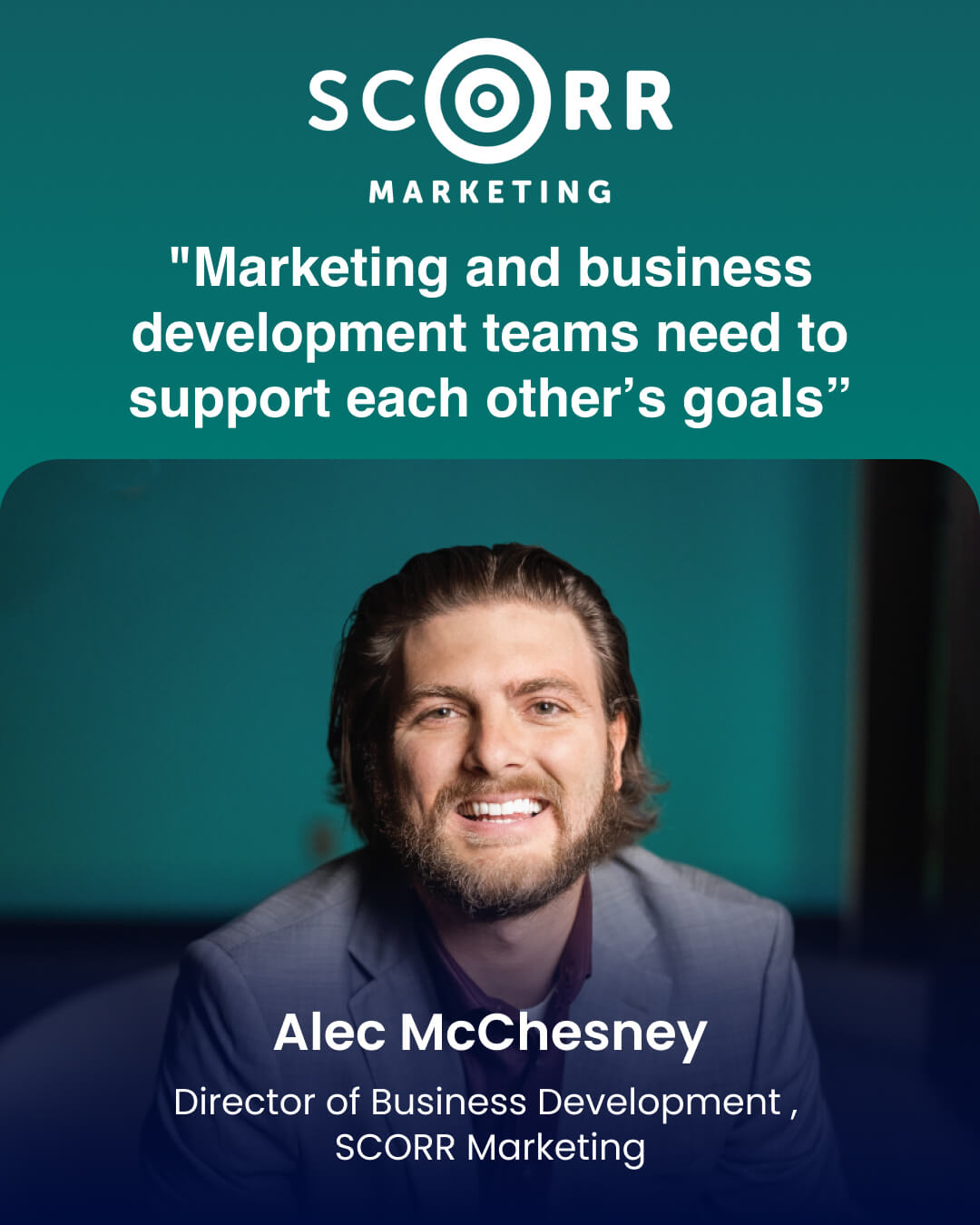
#SpeakPharma with SCORR Marketing
2022-10-22
Impressions: 3144
This week, SpeakPharma interviews Alec McChesney, Director of Business Development, SCORR Marketing, a leading full-service marketing and communications firm in the health sciences space, to understand how marketing and business development teams should work together for effective sales enablement. According to McChesney, the teams should understand the company’s sales goals and collaborate seamlessly to enable sales.
We all know how important it is for the marketing and business development teams to work together to empower sales. But what’s the best place to start when working to strengthen that bridge?
That’s a great question. What we’ve found is that getting both these essential sales-driving teams on the same page about their ideal client persona — who those clients are, what’s most important to them, and what drives their decision making — is the common cornerstone on which the marketing business development (BD) relationship and resulting efforts should be built on.
Once both teams are aligned with the client profile, the next step is to develop the sales pipeline — identifying where clients are entering the sales pipeline and ensuring a clear strategy for receiving and following up with both marketing- and sales-qualified leads.
What is cross-team buy-in? And how can teams achieve this?
Sales enablement is a process by which you provide your sales team with the resources they need to close more deals. Effective sales enablement requires cross-team buy-in. In other words, members of the marketing team have to be clear on the BD team’s goals and get behind them, and vice versa. When we start to see teams falling into silos and focusing only on supporting their own goals rather than the full set of cross-team goals, that’s when friction and a sense of disconnection arise.
Whether you’re on the marketing side and receiving top-down business goals from the BD team, or you’re on the BD side receiving campaign-specific goals from the marketing side, the most important thing for you to do is to orient yourself to the other team’s goals, make sure you understand them, and then throw your support behind both the departments’ goals.
What are some examples of how BD and marketing teams can better integrate tools and processes to achieve sales enablement?
As we discussed earlier, development and implementation of client personas is a great start. Getting on the same page at the systems level is also very important. For example, if your marketing team is using the customer relationship management (CRM) software HubSpot, but your BD team is using Salesforce, you’re missing out on a crucial level of integration. One team might be receiving the leads and then handing them over to the other team for follow-up. But where is your lead nurturing happening?
Synchronizing your tools and processes optimizes your results. Automate integrated lead scoring and invest in the right databases, software, and lead-mining tools. Lead scoring helps your marketing and BD teams identify where a prospect is in the buying process while also enabling follow-ups. The two teams must track their success metrics jointly to support continued integration.
What role can innovation play in bridging the BD-marketing gap as well as in making a sales-inspiring impact with clients?
It’s easy to get stuck in a rut when you’re doing things a certain way in business because that’s how they’ve always been done. Instead, strengthen your BD-marketing bond by encouraging new approaches and creating space for the two teams to brainstorm and collaborate. Ask the question: What non-traditional ideas do you have for reaching potential customers?
The next sales-inspiring impact on your client may come from the ideas generated during this kind of collaborative time – virtual trade shows, live events on social platforms or from a handwritten note with a gift card. Make space for your teams to be creative together and support one another on the execution of the ideas that emerge.
What’s the most important takeaway you’d like BD and marketing professionals to get from this interview? What do you believe will make the biggest impact for these teams when it comes to enabling sales?
Don’t let “the big picture” of your company’s sales goals exist as something that’s external to you. Own it by not only understanding your own piece of the puzzle clearly, but also by understanding and supporting the goals of parallel teams. Sync up at this intention level, and then carry that through to the practical level of aligning tools, processes, and touchpoints to maximize collaboration. You can’t get on the same page through ideas and intentions alone. Strategy and implementation are the keys to successful sales enablement.




